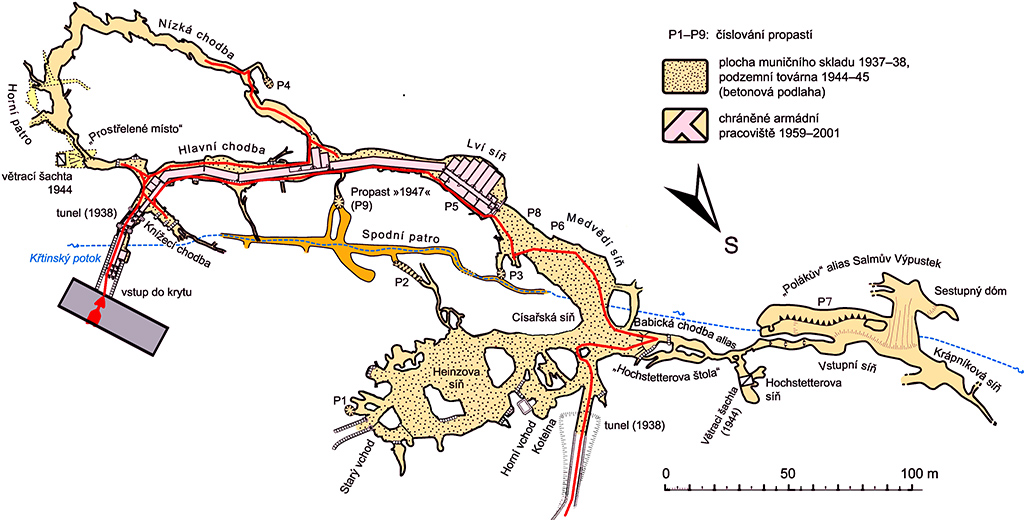Výpustek Cave - visit
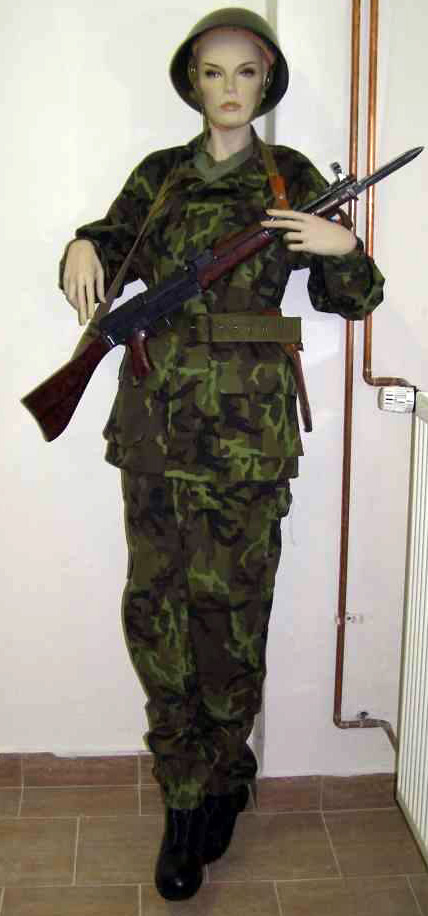
Výpustek Cave - Long tour
The guided tour of the Výpustek cave begins at the entrance foyer of the former barracks, where the visitors are acquainted with the touching history of this place. Historical documents, photos and archaeological discoveries are available here. The door from the entrance foyer leads right into the concrete dugout, which used to be a backup command post of the Czechoslovak People’s Army in case of war conflict. During the years 1961–1967 it was built in an extensive cave corridor. The visitors pass through the sleeping quarters, the logistics hall, the command post and work-rooms and proceed to the technological part of the structure with survival equipment.
From the dugout there is an entrance to the cave area, which is also influenced by human activities. The cave was converted into a German underground factory which, together with phosphate clay mining, changed the cave labyrinth into today’s monumental tunnels and halls. Nevertheless, the original natural character has been preserved on its high ceilings and side passages. The wide corridor fluently leads to the extensive Bear Hall, where numerous bones of Pleistocene vertebrates, most notably complete skeletons of cave bears (Ursus spelaeus), were discovered during research and mining of phosphate clays.
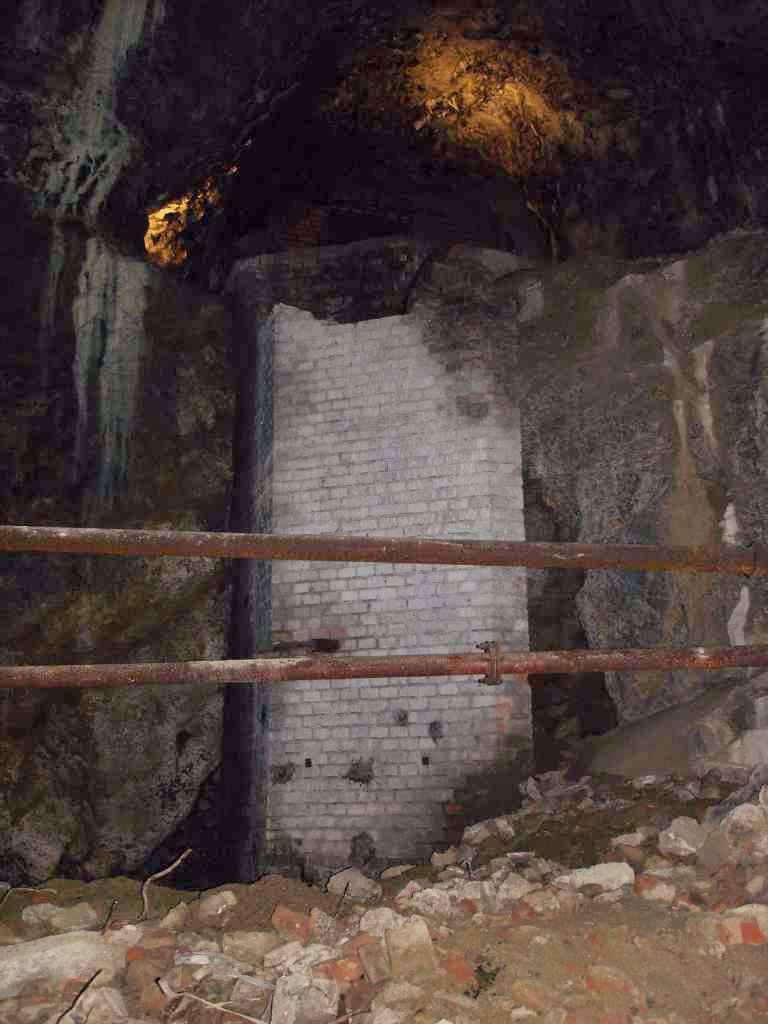
The following Babická Passage is connected with the surface through the ventilation shaft, which during World War II was used for ventilation of the underground factory. The passage continues into the extensive areas with exquisite dripstone decorations. These areas, which are not open to public, are called Salmův Výpustek and may be the key to other unknown continuations of the cave system. In the mouth of the Babická Passage you can find walled-up entrances to other side passages.
The ruins of the German boiler room are impressive as well. It was heated with coal and it is said that the floor channels warmed the air in the whole underground factory up to 17–20 °C. The outside light shines in through the hole, which together with a concrete slide, was used for pouring coal into the tray. The 8-meters-high steel chimney of the boiler leads through the rock massif up to the surface.
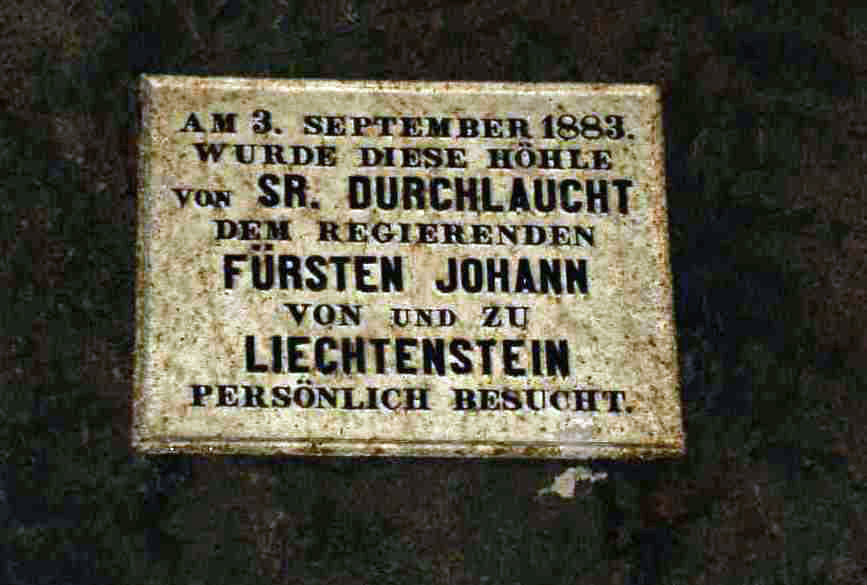
The tour then continues from the boiler room to the Henry Hall. In the ceilings of the corridors, original sculpting of the walls and massive stalactite decoration formed predominantly by sinter coatings is so far notable. A tablet commemorates the visit of the Count John of Liechtenstein in 1883. At the beginning of the 19th century, the Liechtensteins were the first to adapt the cave entrance and organise the guided tours in the cave and these other areas. The dark walls and the hall ceiling with perfect acoustics are covered with a new stalactite decoration made from straws and curtains. The engine room of backup units can be entered by the side passage leading from the premises affected by the fire set by the retreating German Army. The dugout generators were powered by two fixed ship diesel engines from 1966.
An approximately 100-year-old human skeleton was found in a 16-meters-deep abyss which is situated near the exit protected by an armoured gate. Perhaps he was an adventurer who fell down while trying to explore the cave.
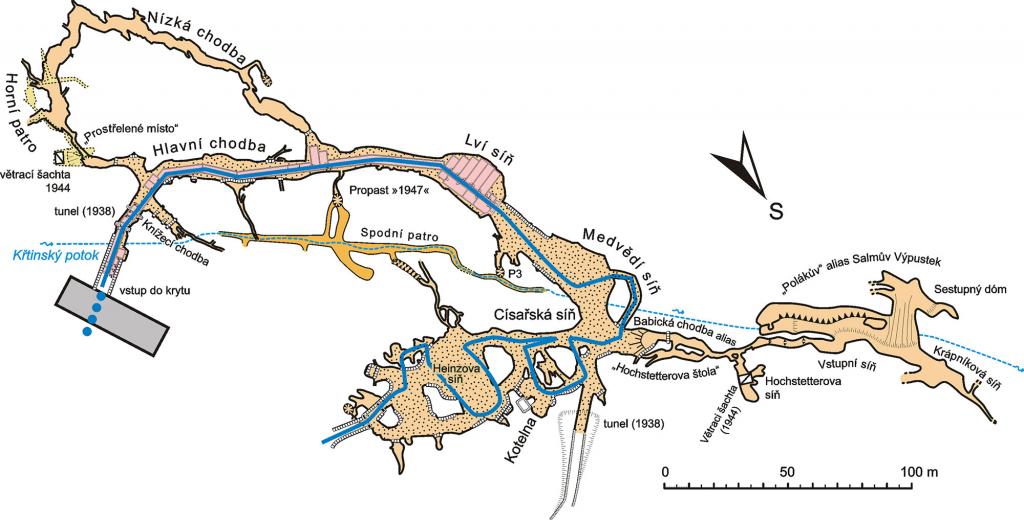
Výpustek cave - Short tour
It is intended especially for parents with strollers, smaller children, scantily clad summer visitors or those who have little time for a tour. The visit takes about 40 minutes. You walk through part of the Long tour of the cave, without a military facility. It starts at the newly illuminated Transport entrance. Visitors will walk through the part called Salmův Výpustek, and in the Škrapový hall with its stalactite decoration they will see a life-size model of a cave lion. They will also learn about the mining of phosphate clays and after climbing the only 13 steps on this route they will be surprised by the vast Bear Hall with a model of a cave bear. Past the illustrative panels that tell the history of the use of caves by humans, visitors will reach the Henry (Concert) Hall. Hall, where performances by well-known and lesser-known artists take place several times a year. They will also see a niche with a small lake, which is the only water in our cave. Then they continue through two natural corridors.
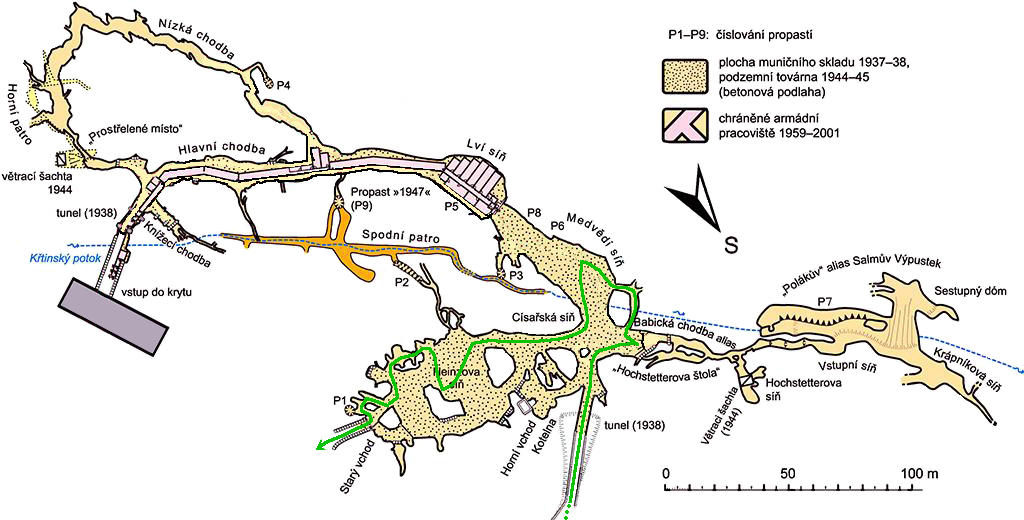
Výpustek cave - Adventure tour
There is the adventure tour DESCOVER THE SECRETS OF THE CAVE, which can be ordered by appointment in advance (max. 10 persons over 6 years of age).
